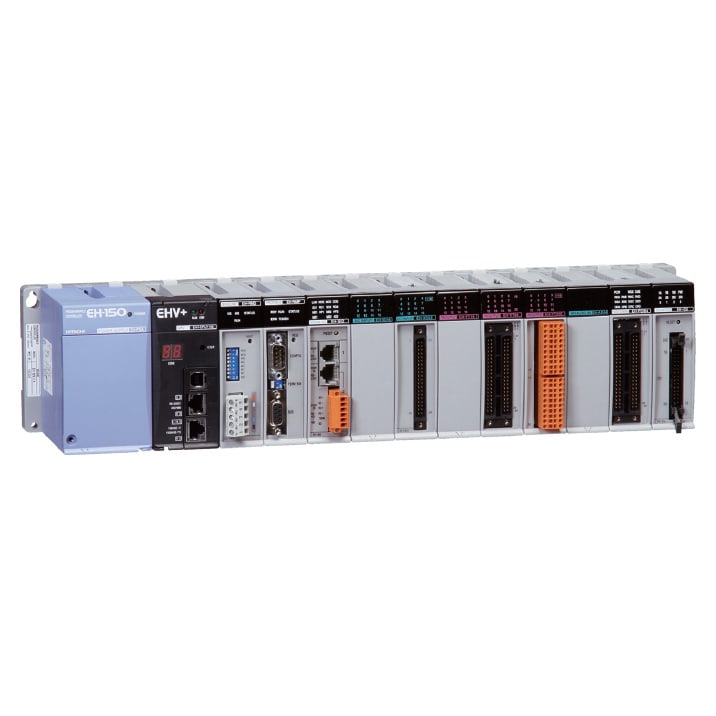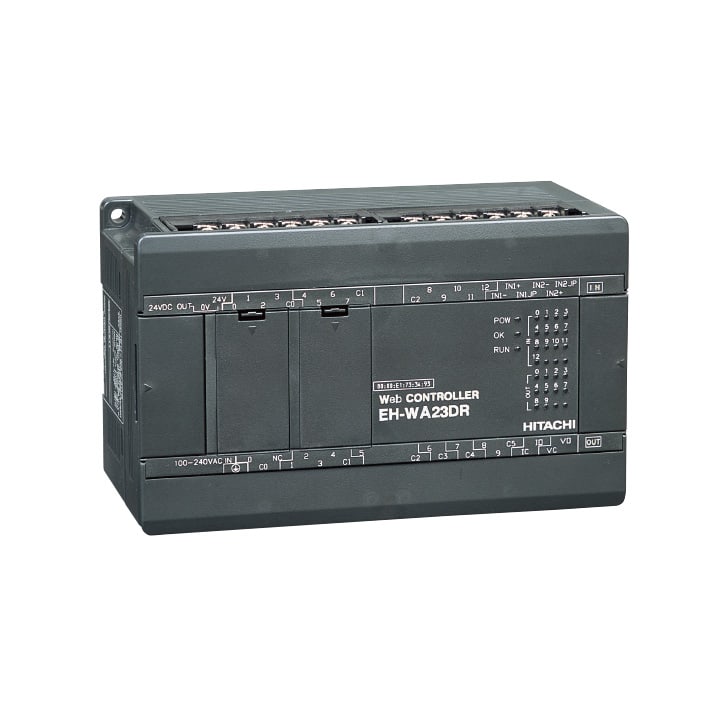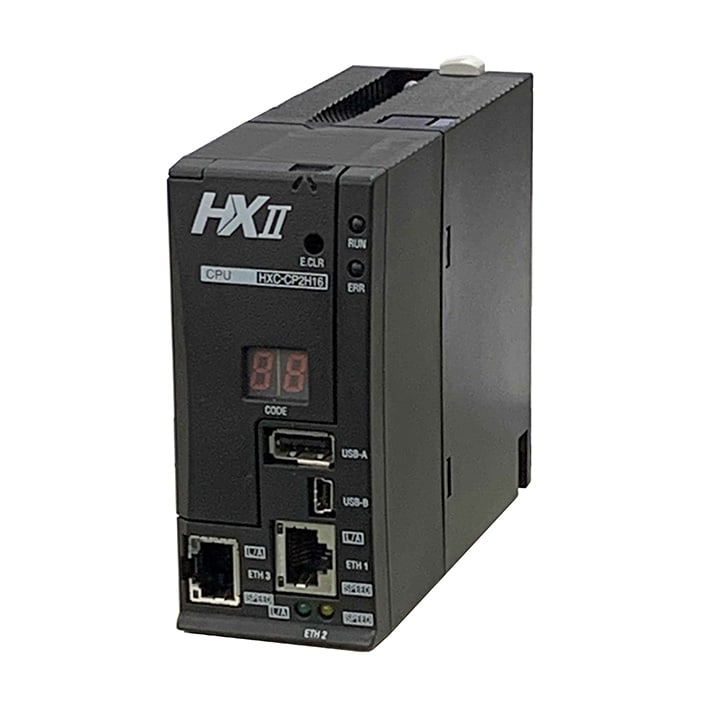- Loading
Industrial ControllerIntegrated Development Environment (IDE)
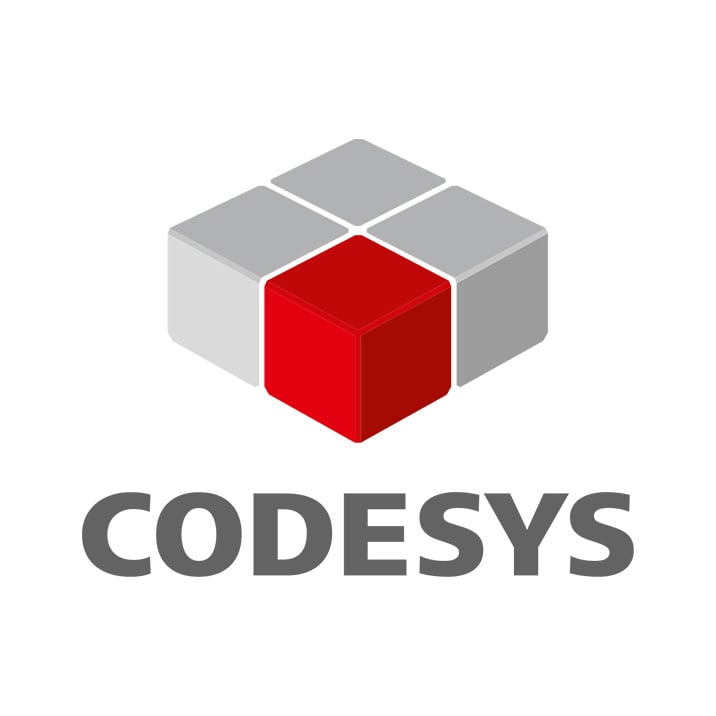
Overview
IEC61131-3 international standards compliant
Integrated Development Environment HX-CODESYS
CODESYS is an integrated development environment that is in conformance with IEC61131-3, international standards. It is a cutting-edge PLC application development tool that has been used by more than 350 controller manufacturers and over tens of thousands of end users in various industries around the world.
Features
Enabling you to select from five languages in conformance with IEC61131-3, according to the intended purpose and the programmer’s skills
LD (Ladder Logic Diagram)
A graphic language based on relay circuits. It is suitable for bit operations, such as interlock processing.
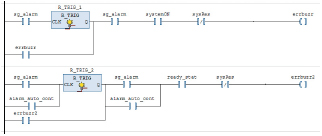
FBD (Function Block Diagram)
A graphic language that makes it easy to see data and signal flows.
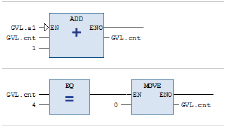
ST (Structured Text)
A text language based on PASCAL. It is perfect for uses that are not handled well by LD, such as branching, repeating, and numerical operations.
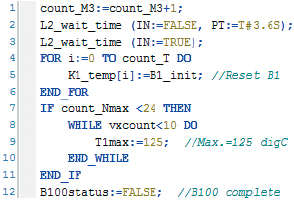
IL (Instruction List)
An imperative (mnemonic) text language for conventional PLCs.
It is suitable for high-speed operations and short programs.
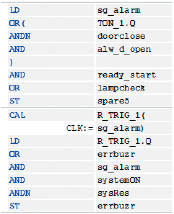
SFC (Sequential Function Chart)
A graphic language that can express status transition. It is suitable for processing progress. Programs at each step are described in LD, FBD, ST, and IL.
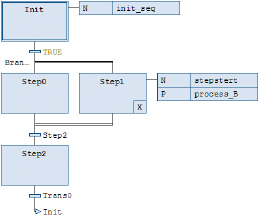
CFC (Continuous Function Chart)
A graphic FBD editor with no restrictions on POU layout and connection. It is possible to give feedback from output to input (non IEC61131-3 language).
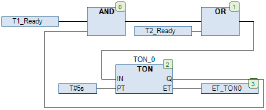
Reduces software development costs
Local variables and global variables
It is possible to define local variables, which are only effective for each program, and global variables, which are common to all programs. Properly using local variables and global variables makes it possible to create application programs with high rates of reusability.
Structured programming
It is possible to create a hierarchy of programs and function blocks. This enhances the readability of application programs, and improves the stability, and as a result enhances efficiency in application development.
Creating a library
Since function blocks of commonly used process can be registered in the library, frequently used process can be easily reused in other application programs. Process contents of these function blocks can be also set as hidden, therefore can be distributed to end users without disclosing technical information to outside.
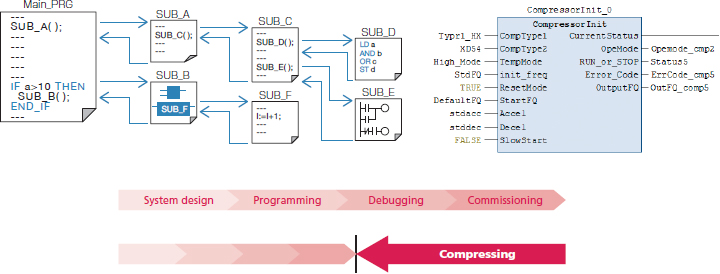
Useful libraries
Convenient and usable commands are incorporated into the standard library; for example, in addition to standard commands in conformance with IEC61131-3, PID and various conversion commands.
- PID control
- Slew rate output
- ASCII conversion/BCD conversion
- Gray code conversion
- Character string operations
- Analog hysteresis
- Minimum/Maximum/Average/Dispersion
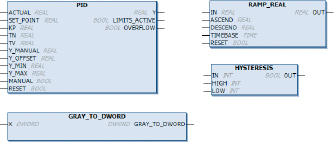
Convenient functions
Convenient functions enhance the efficiency of programming and debugging.
- The automatic input complement function and the input assistant function prevent compilation errors due to input mistakes
- Color changes automatically for imperative language and the corresponding parentheses are highlighted
- ST language can be used together with LD and FBD editors
- Any circuit can be commented out by right-clicking

The powerful debugging function reduces commissioning costs
- Online monitor
- Offl ine simulation
- Break points
- Force
- Single step execution
- Single cycle scan
- Flow control
- Online change
- Trace
- Visualization
- Web visualization
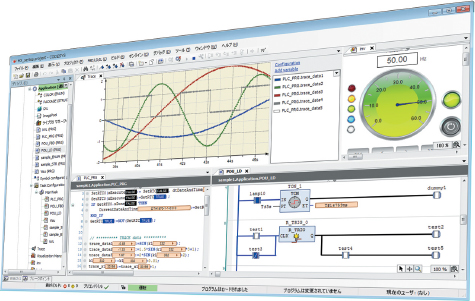
Specifications
Executes collective control of devices, tasks, and programs for applications in the project tree structure
Incorporates the EtherCAT®/Modbus configuration that makes it possible to execute unified controls of I/O for slave devices by using tag names
Supports five programming languages in conformance with IEC61131-3, international standards + CFC (Continuous Function Chart)
Supports the eight total languages for tool display; in addition to Japanese and English, German, French, Italian, Spanish, Russian, and Chinese
Enables object-oriented programming in conformance with IEC61131-3 (3rd edition)
Incorporates a dedicated compiler for each platform that makes it possible to create efficient, powerful machine codes
Enhances development efficiency using diverse functions such as input assist, grammar check, debugging function, and simulation
Inquiries
Contact us for inquiries about our products, quotations, and catalog downloads.
